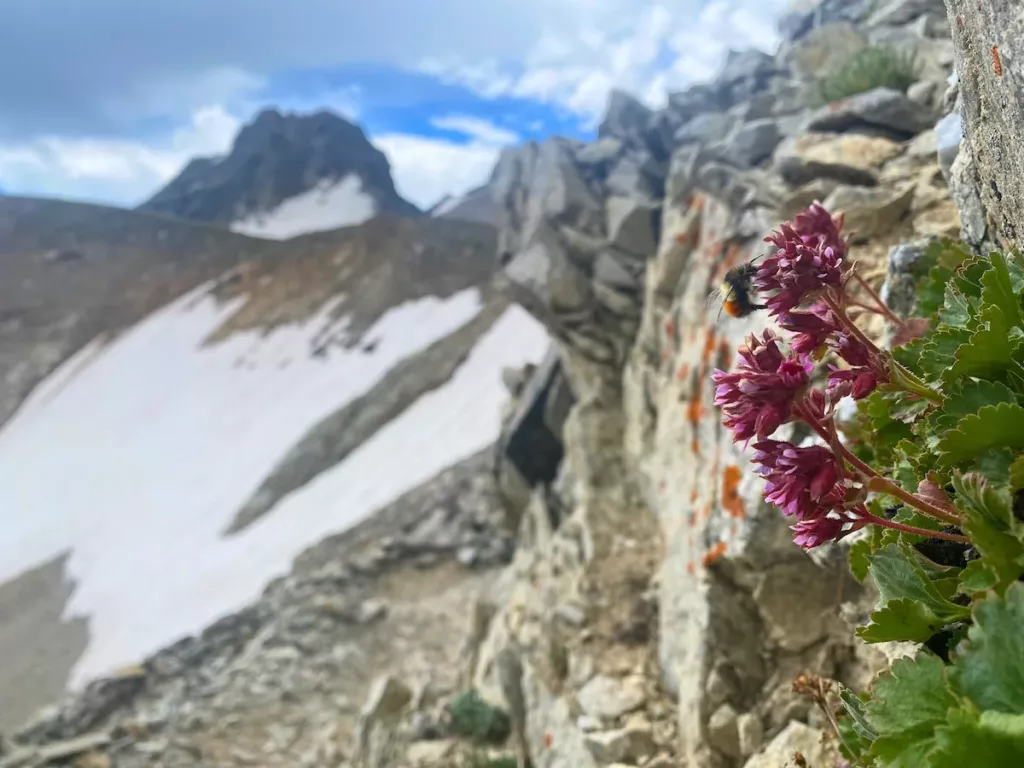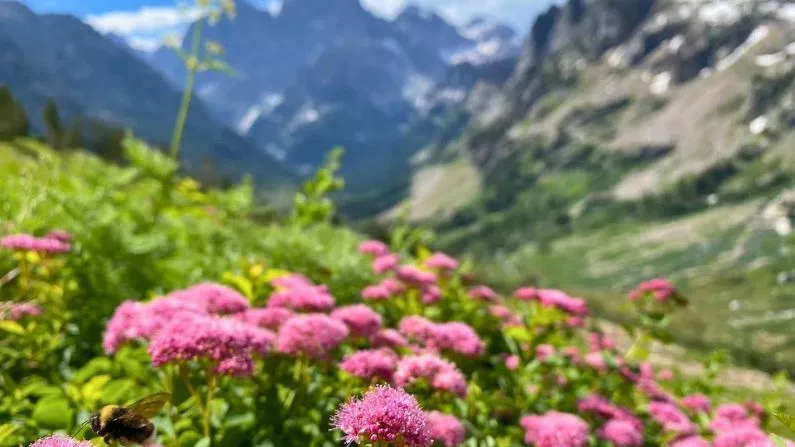By Tennessee Watson, WyoFile.com
From urban flower beds to mountain passes, Ellen Keaveny surveys Wyoming’s bumble bees to learn how these fuzzy pollinators are responding to climate change.
On a recent trip to the Tetons, Keaveny ventured 20 miles up Cascade Canyon and over the Paintbrush Divide to survey bumble bee diversity and body condition at different altitudes. In a cluster of wildflowers at close to 10,000 feet, the University of Wyoming Ph.D. candidate in ecology spotted a bumble bee she wasn’t expecting to see.
“Bombus occidentalis,” Keaveny yelped, pointing excitedly to a western bumble bee bobbing and weaving its way through the rosy spiraea.
The western bumble bee, found across the West from New Mexico up to Alaska, has been on the decline. The U.S. Fish and Wildlife Service is reviewing whether the species should be considered endangered.
“It’s always exciting to see a bee that isn’t doing well,” Keaveny reflected.

Ellen Keaveny surveys bumble bees in the Teton’s Paintbrush Canyon to assess species diversity and body condition. (Ellen Keaveny)
While she doesn’t see them often, she said their distinct white bottoms make them easy to identify.
“There are a lot of bumble bee species that are very yellow, or yellow and orange. So when you see that black pile just shift into that abrupt white butt,” Keaveny said, that’s when you know it’s an occidentalis.

A Bombus melanopygus visits an alumroot brookfoam flower at the top of Paintbrush Canyon in Grand Teton National Park. (Ellen Keaveny)
The western bumble bee was just one of many species Keaveny saw on that hike. Headed down Paintbrush Canyon she spotted a Bombus melanopygus fueling up on some alumroot brookfoam blossoming on the side of a cliff.
“It’s just nice to know that there is species diversity,” Keaveny said. “Unless you’re paying attention … you don’t know what’s out there.”
WyoFile is an independent nonprofit news organization focused on Wyoming people, places and policy.






